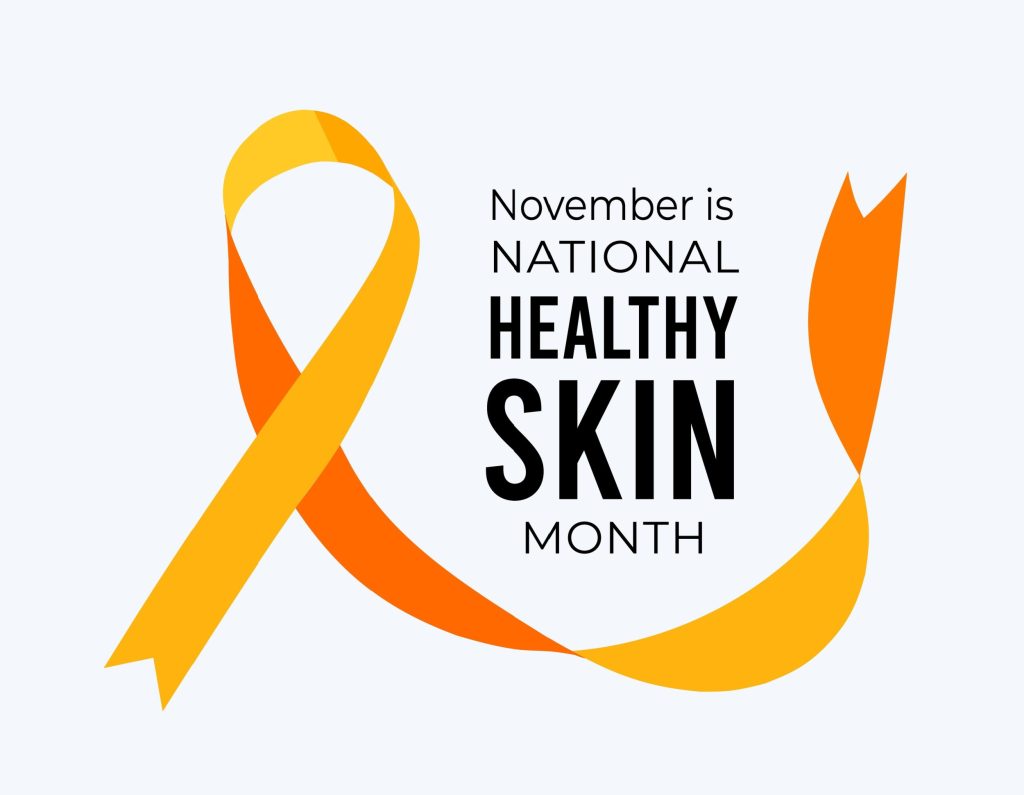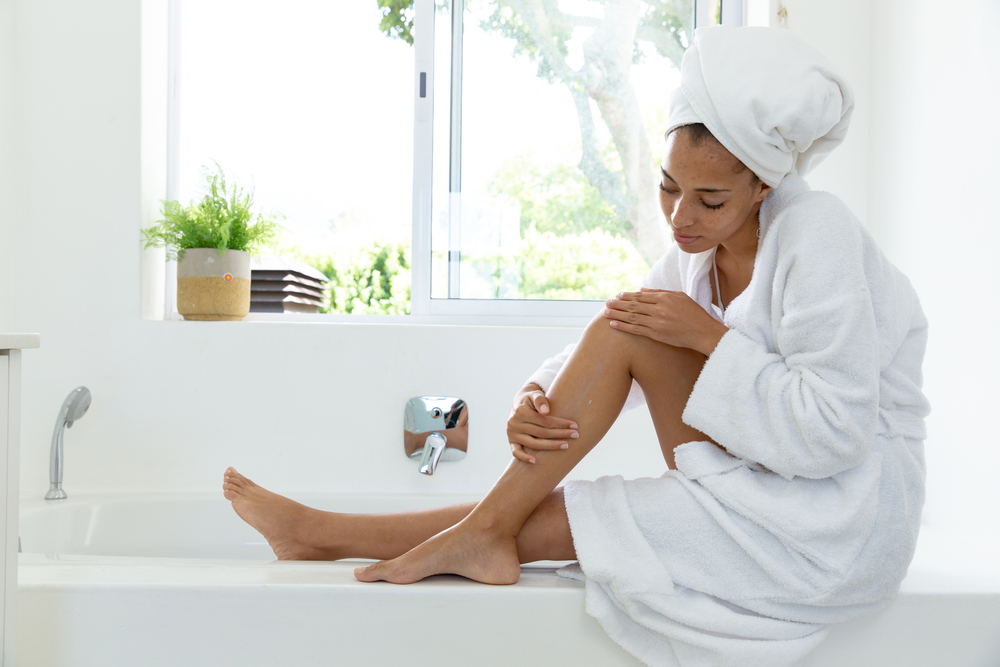Comprehensive sun protection is everything when it comes to keeping yourself and your loved ones safe from the harmful effects of the sun’s UV rays. While we can all be diligent about applying sunscreen to prominent areas, it’s often the overlooked spots that accumulate sun damage over time, increasing the risk of skin cancer. By fostering a culture of looking out for one another’s skin health through early detection and prevention, we can take steps to lower the risk of skin cancer in each other’s lives.
Skin cancer can develop in areas that are hard to see on oneself. By assisting friends and family in checking for suspicious moles or ensuring thorough sunscreen application, we create a supportive environment that prioritizes skin health.
The best way to recognize an issue is by getting familiar with what’s normal in appearance. Here’s what to watch for:
- New Moles or Growths – Look for any new spots that have developed or stand out and practice the ABCDEs of Melanoma:
- A – Asymmetry (one half doesn’t match the other)
- B – Border (irregular, blurred, or jagged edges)
- C – Color (uneven shades of brown, black, red, or white)
- D – Diameter (larger than a pencil eraser)
- E – Evolving (any noticeable change in size, shape, or behavior)
- Changes in Existing Moles – Watch for changes in size, shape, or color to the moles you already have.
- Sores That Don’t Heal – Make note of any spot that’s crusty, bleeding, or won’t heal after a few weeks.
If you notice a suspicious or unusual spot on someone, encourage them to consult a dermatologist. Basically, in short, if you see something, say something.
It’s also important to remember that even the most conscientious people can overlook certain areas when applying sunscreen. Here are the top six areas to pay extra attention to when you wear sunscreen.
- Hairline & Scalp. We often think that our hair is a natural sun protectant, but the truth is, the sun can penetrate well beyond your strands. Especially if you have thinning hair, wide parts or an exposed scalp, your head can burn more easily. You can use spray sunscreen or wear a wide-brimmed hat to help protect your scalp and hairline from the sun.
- Lips. The lips are often one of the easiest spots to miss. That’s because many people don’t put sunscreen on them. To protect your lips, use lip balm with SPF and remember to apply every two hours. Be sure to avoid shiny lip balms and gloss without SPF, because they can end up promoting sun damage instead of protecting from it.
- Hands & Feet. Hands, fingers (and nails), feet, and toes (and nails) are typically left out when applying sunscreen. We often apply sunscreen to our arms and legs but forget to keep moving down to the hands and feet. Your fingers and toes as well as tops and bottoms of hands and feet are sensitive areas that also need sun protection and are vulnerable to skin cancer. Make sure you cover all exposed skin including hands and feet when applying sun protection.
- Eyes & Eyelids. According to the Skin Cancer Foundation, approximately 5-10 percent of all skin cancers occur on the eyelid or the eye itself. The inner corners of the eye, the bridge of the nose, and the eyelids are areas that are vulnerable to skin cancer because many people don’t think of putting sunscreen there. It is recommended that you apply mineral sunscreen to avoid becoming irritated.
- Ears. Your ears should be included in your sunscreen regimen. The tops and backs of your ears are among the most common sites for basal and squamous cell carcinomas. Pay special attention if your ears are exposed to the sun due to wearing your hair up or having shorter hair. A hat that covers your ears is a great way to add extra daily sun protection.
- Underarms & Sides of Torso. It can be easy to skip sunscreen on these zones since we assume they are naturally shielded by the sun from our own bodies. But when we wear sleeveless tops and move our arms around, we allow these parts of our skin to be exposed to the sun. The best way to combat this is to wear sunscreen on the sides of your torso and underarms just like you would the rest of your body.
Sunscreen Tips
Sunscreen has to be applied correctly to be fully effective. Some people apply too little and don’t get what’s needed for full coverage. As a general rule, you need about one ounce (a shot-glass full) to cover your entire body.
Keys to Staying Sun Safe with Sunscreen:
- Apply sunscreen 15–30 minutes before sun exposure.
- Reapply every two hours, or after swimming or sweating.
- Choose a broad-spectrum sunscreen with at least SPF 30.
- Wear sunscreen daily, not just while you are at the beach. From walking the dog, to driving, or gardening, it all adds up.
Proactive Care
Skin cancer is the most common cancer in the U.S., but it’s also one of the most preventable. A culture of awareness starts with individuals who care enough to say something. Make skin protection part of your family and friend traditions – before outdoor events, vacations, or sports practices. You can start small – keep a bottle of SPF in your car or bag. Model good sun care habits. Be the one who says, “Let me help you with that spot.” Encourage each other to make annual dermatologist appointments and follow up on suspicious moles.
With the right attitude, awareness, and a sun safety plan that includes sunscreen, you can help protect yourself and the ones you care about most from skin cancer.
About Us
FLDSCC’s team of providers are experts in diagnosing and treating skin cancers; skin conditions and diseases such as eczema, rosacea, dry skin, rashes, and warts; and chronic skin diseases and infections, while simultaneously tackling aging skin, wound care, and a multitude of other skin, hair, and nail concerns.
Several FLDSCC providers are fellowship-trained in Mohs micrographic surgery, an effective state-of-the-art treatment for most types of skin cancers. Mohs surgery involves minimal discomfort and encourages the greatest preservation of healthy tissue, which means less risk of scarring and superior cosmetic results.
FLDSCC has many convenient locations throughout the state. For more information, visit www.fldscc.com, or call (855) FLD-SKIN.


